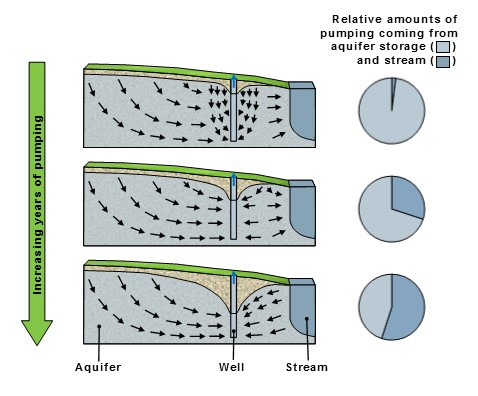
There is usually a time lag between the start of groundwater pumping and when the rate of stream depletion reaches equilibrium. This is impacted by the hydraulic conductivity Hydraulic conductivity is a measure of how easily water can pass through soil or rock: high values indicate water can pass easily; low values indicate that the material is less permeable. of the aquifer and the distance between the well and the stream. The longer the distance of a pumping well from a stream, the longer the lag time will be. Lower hydraulic conductivity of an aquifer means a longer time lag.





